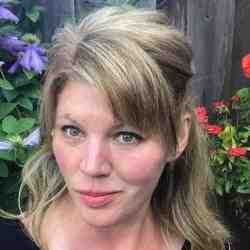前書き
By forming an inclusive coalition of supporters of local campaigns against caste injustice, Dr. Lenin helps citizen organizations diagnose and treat the caste origins of social conflict.
新しいアイデア
Lenin sees that unless Indian society deals with the injustices of the caste system head-on, it will not attack social conflict at its root. Translating these convictions into action, Lenin has built local, national, and regional institutions that challenge caste. His People's Vigilance Committee for Human Rights (PVCHR) is a large membership organization that draws in people from different walks of life. Among its fifty thousand members in five northern states, three thousand are former torture victims whom the Committee has helped. Their solidarity demonstrates how Lenin is creatively building an inclusive social movement. Also participating are famous intellectuals whose integrity and credibility raise the coalition's public image. By linking PVCHR to local "People-Friendly Village" committees, Lenin provides allies to previously isolated victims of caste discrimination, usually Dalits or so-called "untouchables." The Committee draws on international human rights organizations like Amnesty International to pressure the Indian government and broaden support for the movement against caste. Lenin has encouraged other human rights organizations and funding agencies to begin setting their own goals and priorities in terms of caste. Lenin's work marks a shift in the Indian human rights movement, which has been reluctant to address injustices in the name of caste as a fundamental human rights issue. He is one of only a handful of activists to declare that such discrimination goes against democratic principles by promoting inequality. By working from Varanasi in Uttar Pradesh–one of the most traditional, conservative, and segregated regions in India–Lenin demonstrates his resolve.
問題
The caste system continues to determine political, social, and economic life for a billion people in South Asia. The practice of "untouchability" against Dalits–people of low status, who fall outside the caste system–was outlawed by the Indian constitution fifty years ago. In reality, the practice persists. Subsequent laws have elaborated the rights and protections due to Dalits and tribal minorities, but contradiction between the laws that are supposed to govern a society and the ethics and beliefs that rule the streets remain high. Dalits are still either landless or own very little land, often living in segregated colonies. They are forbidden by upper-caste Hindus to enter temples, to draw water from public wells and ponds, and must use separate tumblers at village tea stalls. Caste violence is rampant. In the state of Bihar, the private gangs of high-caste landlords murdered more than four hundred Dalits from 1995 to 1999. Police often refuse to pursue complaints against upper-caste Hindus accused of abusing Dalits and fail to enforce laws written to protect them. Prejudiced by their own biases or influenced by powerful village landlords and politicians, they frequently detain Dalits under the slimmest pretext. For their part, civil society organizations treat the symptoms of caste discrimination without attacking the disease itself. There is a tendency to reduce problems originating from caste conflict to problems of poverty; higher income, however, does not preclude discrimination. Even progressive civil society organizations aim to improve the lot of lower-caste people by finding them jobs, teaching them to read, educating their children, or seeking justice in individual cases of abuse. Each case is treated by giving out aid to the person suffering from a particular rights violation without looking at the underlying caste discrimination. The greater impact of such an approach is negligible because it seeks to achieve equality among people deemed unequal by society.
戦略
Lenin takes the "policy to practice" approach in villages, where caste discrimination is acute. Thus, he focuses on implementing policies laid down by law. The Committee campaigns on various issues concerning the Dalit community including schooling for children, fair wages, land titles, and basic rights. On the other hand, in his work with non-profits, activists, academics, and general supporters, Lenin believes in the "from practice to policy" approach. His focus at this level is pushing society to acknowledge caste discrimination as a fundamental human rights issue. These strategies complement each other effectively. PVCHR's fifty thousand members participate in rallies, demonstrations and signature campaigns. The interest and support of people who have not faced caste conflicts reinforces that it is a matter of concern throughout society. PVCHR is also a network of human rights organizations that helps move from "practice to policy" by ensuring the justice system seriously considers caste abuse and punishes violators. Groups in the network include the India Center for Human Rights and Law, Human Rights Lawyer's Network, People's Commission against Assault on Minorities, Sajhaa Sanskriti Manch, Samanvay, Childline, and the National Federation for Right to Education. To translate policy into practice, Lenin has begun working on the latest part of his strategy, Jan Mitra Gaon, or the People-Friendly Village. These villages have durable local institutions that work to promote basic human rights in the face of continuous discrimination. Lenin has adopted four villages and one slum as pilot projects, which include reactivating defunct primary schools, eradicating bonded labor, making sure girls get education, and promoting non-formal education. The village committees comprise at least 50 percent Dalits, and seek to realize greater political representation of Dalits on village councils. The heads of the village committee and village council, a government representative, and a PVCHR employee will serve as a conflict resolution group and form the People-Friendly Committee. In its legal work, PVCHR's early successes include getting the National Human Rights Commission to award the highest compensation to a survivor of extreme torture by his upper-caste employer. The Commission also put forty-two police officers behind bars for torturing Dalits. Working to bridge the gap between the community and the National Human Rights Commission, Lenin is now advocating for a State Human Rights Commission in Uttar Pradesh.
人
Lenin's views on caste, conflict and social change took shape while he worked with bonded laborers. He was born into a high caste Hindu family which he describes as "feudal." He noticed that not a single child bonded in the sari or carpet industries came from an upper caste, even though some high-caste families were often just as poor as the lower castes. He realized that caste, not class, was at work. By the end of 1996, Lenin was championing the rights of lower-caste people. Early experiences taught him that confrontation was dangerous and not the most effective method. Increasingly, Lenin recognized caste in all kinds of social conflict and envisioned a movement that could break the closed, feudal hierarchies of conservative slums and villages by building up local institutions and supporting them with a high profile and active human rights network.




